Overview of Seed Technology | Farmer Scion
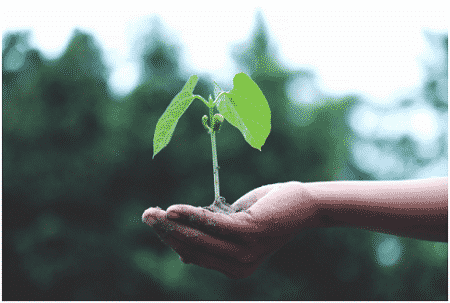
The development of seed technology in India began in the 1960s, when new maize varieties were introduced. This, combined with the government’s efforts to provide quality seeds of improved varieties, resulted in the development of standardized protocols for seed production and quality evaluation.
The Indian Agricultural Research Institute (IARI) in New Delhi led these efforts by establishing a separate seed testing unit within the Division of Botany in 1961. This signalled the start of a national focus on seed quality and productivity. By 1968, this unit had evolved into the Department of Seed Technology, where it led initiatives in seed maintenance, production, quality evaluation, certification, variety identification, and the development of seed quality assessment methods. The department was restructured as the Division of Seed Science and Technology in 1984, and it continues to be a leader in seed research and development today.
What is Seed Technology?
Seed technology is an important field of agricultural science that deals with seed preparation, testing, and storage. Its primary goal is to improve seed quality so that farmers can increase crop yields and ensure food security. Seed technology combines modern agricultural practices, biological sciences, and genetic engineering to improve seed production and preservation. This discipline encompasses a wide range of activities, including the development of new crop varieties as well as seed certification, processing, and distribution.
Seed technology is critical in modern agriculture for addressing global food security and sustainability challenges. By focussing on improving seed quality and yield potential, this field has a direct impact on farm productivity and farmer livelihoods around the world.

Definitions for Seed Technology
Seed technology is a broad term for the scientific study of seed production, management, quality control, and preservation. It includes activities such as seed processing, certification, storage, marketing, and distribution. The ultimate goal of seed technology is to provide farmers with high-quality seeds that are genetically pure, viable, and capable of producing high-yield crops.
Basic definition: Seed technology refers to the processes involved in the production, improvement, and management of seeds to ensure they meet quality standards for agricultural applications.
Comprehensive Definition: Seed technology includes new crop variety development, seed marketing and distribution, seed processing and certification, seed physiology research, testing, storage, and genetic purity evaluation.
Seed technology is critical in providing farmers with improved seeds that can withstand environmental stresses, diseases, and pests, resulting in increased agricultural productivity.
Types of Seeds
Seeds are generally divided into two types based on their structure and embryonic development:
- Monocotyledonous seeds
- Dicotyledonous seeds
Monocotyledonous seeds
These seeds have a single cotyledon. Monocotyledons, also known as monocots, are a type of flowering plant whose seeds contain only one embryonic leaf. Rice is a classic monocotyledonous seed. Other examples include maize, wheat, barley, and palm trees. Monocots are distinguished by their long, narrow leaves with parallel veins and fibrous root structure.
Dicotyledonous Seeds
These seeds have two cotyledons. Dicotyledons, or dicots, are flowering plants that produce seeds with two embryonic leaves. Tomatoes are a common example of dicotyledonous seeds. Other examples include peas, beans, and sunflowers. Dicots typically have large leaves with a network of veins and a taproot.
Understanding the distinction between monocots and dicots is critical for farmers because each has unique cultivation requirements and growth patterns. Monocots, for example, typically thrive in areas with plenty of rainfall and well-drained soils, whereas dicots may require more specific soil conditions and water management practices.
Parts of a Seed
A seed is a complex structure that protects the plant embryo and ensures its survival in adverse conditions. The seed is an important part of the plant’s life cycle because it allows for reproduction and ensures the survival of the species. A typical seed contains three main components:
Seed Coat
The seed coat is an outer protective layer that covers the seed’s internal parts. It prevents physical damage, water loss, and pathogen infection. The seed coat has two layers: the outer layer (testa) and the inner layer (tegmen). The thick, tough seed coat shields the seed from harsh environmental conditions like extreme temperatures and drought, preventing water loss and lowering the risk of damage.
Endosperm
Endosperm is a tissue within the seed that feeds the developing embryo. It is high in starch, protein, and other essential nutrients that help the embryo grow during germination. In some seeds, such as maize and wheat, the endosperm makes up the majority of the volume. Other seeds, such as beans and peas, absorb the endosperm during development, leaving little to no visible endosperm when mature. Fertilisation causes the endosperm to be triploid (with three sets of chromosomes), which plays an important role in seed development.
Embryo
The embryo is the most crucial part of the seed, containing the cells necessary for the growth of a new plant. The embryo consists of:
- Epicotyl: Develops into the shoot system, including stems and leaves.
- Radicle: The embryonic root that anchors the plant to the soil and absorbs water and nutrients.
- Hypocotyl: The region that connects the radicle and cotyledons, helping the seedling emerge from the soil.
- Cotyledons: Provide nutrients to various parts of the embryo and serve as the first leaves during seedling growth.
Understanding seed anatomy helps farmers in managing seed storage, planting, and cultivation more effectively.
Goals of Seed Technology
The primary goal of seed technology is to increase agricultural productivity by providing farmers with high-quality seeds that are genetically pure, disease-resistant, and capable of producing large yields. This is accomplished via the following key objectives:
- Rapid Multiplication of Seed Varieties: One of the primary objectives of seed technology is to rapidly multiply new, high-yielding seed varieties developed by plant breeders. This ensures that farmers have access to improved seeds, which can increase agricultural production.
- A timely supply of seeds: Seed technology ensures that seeds are available to farmers at the appropriate time, allowing them to plan their planting schedules more effectively. The timely availability of seeds helps to avoid sowing delays and ensures that crops are planted in the best possible conditions.
- Assured Seed Quality: Seed technology aims to maintain high seed quality standards, ensuring that farmers receive genetically pure, viable seeds capable of producing healthy crops. Rigorous testing for genetic purity, germination rates, and disease resistance is part of the quality control process.
- Affordable Seed Pricing: Seed technology aims to make high-quality seeds accessible to all farmers, regardless of financial circumstances. Seed technology increases access to improved varieties by making seeds available at reasonable prices, resulting in better agricultural outcomes.
Seed Production Technology
Seed production technology focuses on ensuring the genetic purity and quality of seeds throughout the manufacturing process. This entails several essential principles and practices, including:
Genetic Purity Maintenance
To maintain the genetic purity of seed varieties, it is critical to avoid contamination during seed production. This can be accomplished by isolating seed fields, preventing cross-pollination, and employing appropriate breeding techniques.
Preventing Variety Deterioration
Developmental variations, diseases, and natural cross-pollination can all cause seed varieties to deteriorate over time. Seed production technology addresses these issues by implementing practices that ensure the quality of seed varieties.
Quality Control Testing
Quality control testing is conducted on a regular basis. Seed production requires ongoing testing for genetic purity, germination rates, and disease resistance. These tests ensure that seeds meet quality standards and are appropriate for distribution to farmers.
Challenges of Seed Production
Despite advancements in seed technology, there are still several challenges to producing high-quality seeds. This includes:
- Mechanical Blending: Mechanical Blending occurs when seeds from different varieties are accidentally mixed together during planting, harvesting, or storage. Mechanical blending can reduce the genetic purity of seed batches, lowering crop yields.
- Cross-Pollination: Natural cross-pollination of different seed varieties, particularly in sexually propagated crops, can result in genetic contamination. This is especially problematic in crops such as maize, where wind or insect pollination can cause unintended hybridisation.
- Disease susceptibility: Certain seed varieties are susceptible to diseases caused by fungi, bacteria, or viruses. These diseases can reduce seed viability and crop performance.
- Environmental Factors: Extreme weather conditions, such as droughts, floods, and temperature fluctuations, can have an impact on seed production by lowering germination rates and viability.
Maintaining Biological Purity in Seed Production
While seed technology has improved agricultural practices, the industry faces several challenges:
- Mechanical Blending: Accidental mixing of seeds from different varieties can occur during planting, harvesting, or storage, leading to reduced genetic purity.
- Natural Cross-Pollination: In sexually propagated crops, cross-pollination between different varieties can cause genetic contamination, especially in wind-pollinated plants like maize.
- Disease Susceptibility: Seed varieties can be vulnerable to fungal, bacterial, or viral diseases, reducing viability and yield.
- Environmental Stress: Factors like drought, floods, and temperature extremes can impact seed quality and viability.
Maintaining Biological Purity in Seed Production
Ensuring the biological purity of seeds is essential to achieving high yields and protecting crop resilience. Some strategies to maintain purity include:
- Isolation of Seed Fields: Keeping seed fields separate from other crops prevents cross-pollination, preserving genetic integrity.
- Roguing: The practice of removing off-type plants from seed fields helps maintain genetic purity and ensures consistent crop quality.
- Regular Testing: Frequent testing of seed crops for genetic purity and viability is necessary to ensure they meet quality standards.
- Seed Certification Programs: Certification guarantees that seeds are true to type and meet the standards for quality and performance, providing assurance to farmers.
- Grow-Out Tests: These tests involve planting seeds under controlled conditions to observe their growth and verify quality.
Importance of Seed Technology in Modern Agriculture
The role of seed technology in modern agriculture cannot be overstated. By providing high-quality, genetically pure seeds, this technology supports farmers in achieving higher crop yields, improving food security, and building resilience against environmental stress. The development of drought-resistant, pest-resistant, and high-yielding varieties through seed technology has enabled farmers to face the challenges of climate change, soil degradation, and food scarcity.
Conclusion
Seed technology is foundational to modern agriculture, driving improvements in crop yields, food security, and environmental sustainability. For farmers, access to high-quality seeds can mean the difference between a successful harvest and a poor one. By investing in seed technology, the agricultural sector can continue to adapt to the changing environment, meet growing food demands, and ensure a stable food supply.

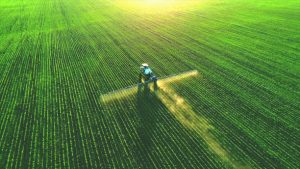
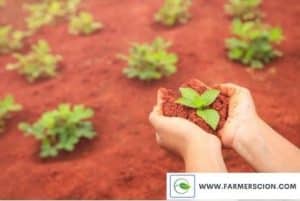
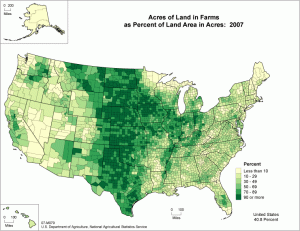

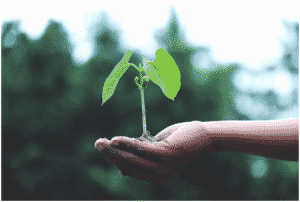
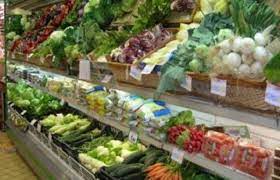

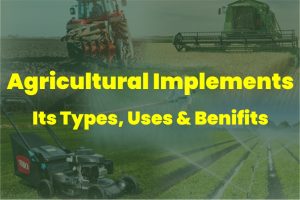
Great article! I found your perspective on this topic both enlightening and thought-provoking. The way you break down complex ideas into understandable insights is truly commendable. It’s interesting to see how these developments could shape our future. I’m particularly intrigued by your point about potential challenges and would love to dive deeper into that.
For those who are interested in exploring this topic further, I recommend checking out this resource for more detailed information: comprehensive guide. It offers additional insights that complement what’s discussed here.
Looking forward to hearing others’ thoughts and continuing this discussion. Thanks for sharing such valuable information!
Great article! I appreciate the clear and insightful perspective you’ve shared. It’s fascinating to see how this topic is developing. For those interested in diving deeper, I found an excellent resource that expands on these ideas: check it out here. Looking forward to hearing others’ thoughts and continuing the discussion!
Great read! The author’s analysis was both thorough and engaging. I found myself thinking about it long after reading. What did you all think about this?